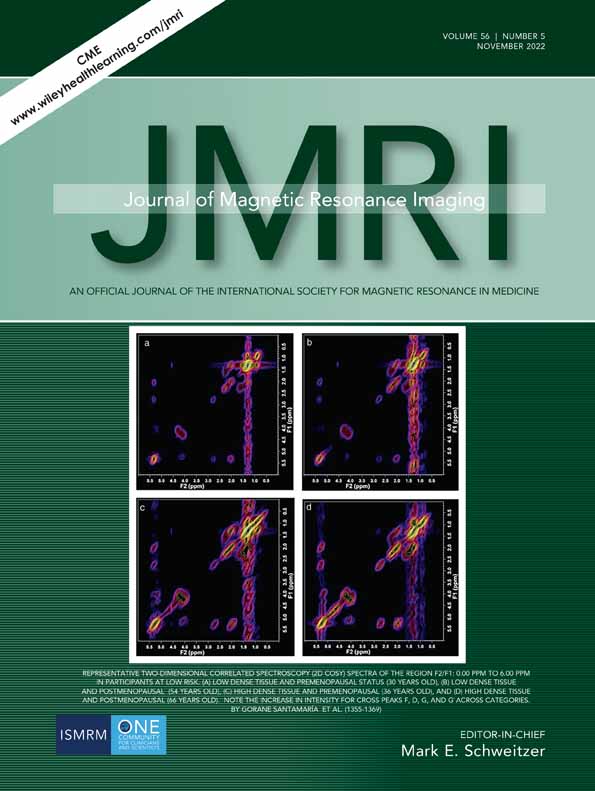Impact of Type 2 Diabetes Mellitus on Epicardial Adipose Tissue and Myocardial Microcirculation by MRI in Postmenopausal Women
Shan Huang and Yuan Li contributed equally to this work.
Abstract
Background
Type 2 diabetes mellitus (T2DM) often occurs conjunctly with the menopausal transition in female patients. In addition, epicardial adipose tissue (EAT) has an unfavorable impact on the myocardium and coronary arteries under the influence of metabolic disorders.
Purpose
To investigate the impact of T2DM on EAT and myocardial microvascular function in postmenopausal women.
Study Type
Retrospective.
Population
One-hundred sixty-one postmenopausal women divided into three groups: newly diagnosed (≤5 years) T2DM (n = 56, 58.6 ± 7.7 years), long-term (>5 years) T2DM (n = 57, 61.9 ± 7.9 years), and healthy controls (n = 48, 59.4 ± 7.4 years).
Field Strength/Sequence
3.0 T; balanced steady-state free precession and inversion recovery prepared echo-planar sequences.
Assessment
EAT volume was quantified by delineating the epicardial border and the visceral layer of pericardium on the short-axis cine stacks. Perfusion parameters including upslope, maximum signal intensity (MaxSI) and time to maximum signal intensity (TTM) were derived from the first-pass perfusion signal intensity–time curves.
Statistical Tests
One-way analysis of variance, Pearson's and Spearman correlation, and multivariable linear regression. Two-sided P < 0.05 was considered statistically significant.
Results
EAT volume was significantly increased in diabetic postmenopausal women compared to the controls (48.4 ± 13.4 mL/m2 [newly diagnosed T2DM] vs. 58.4 ± 17.3 mL/m2 [long-term T2DM] vs. 35.8 ± 12.3 mL/m2 [controls]). Regarding perfusion parameters, upslope and MaxSI were significantly reduced (2.6 ± 1.0 [newly diagnosed T2DM] vs. 2.1 ± 0.8 [long-term T2DM] vs. 3.6 ± 1.3 [controls]; and 21.4 ± 6.9 [newly diagnosed T2DM] vs. 18.7 ± 6.4 [long-term T2DM] vs. 28.4 ± 8.6 [controls]), whereas TTM was significantly increased in the T2DM groups compared to the control group (23.6 ± 8.7 [newly diagnosed T2DM] vs. 27.1 ± 9.4 [long-term T2DM] vs. 21.4 ± 6.0 [controls]). Multivariable analysis (adjusted coefficient of determination [R2] = 0.489) showed that EAT volume (β = −0.610) and menopausal age (β = 0.433) were independently correlated with decreased perfusion upslope.
Data Conclusion
Diabetic postmenopausal women had significantly higher EAT volume and more impaired microcirculation compared to the controls. Increased EAT volume and earlier menopausal age were independently associated with microvascular dysfunction in these patients.
Level of Evidence
3
Technical Efficacy Stage
3




